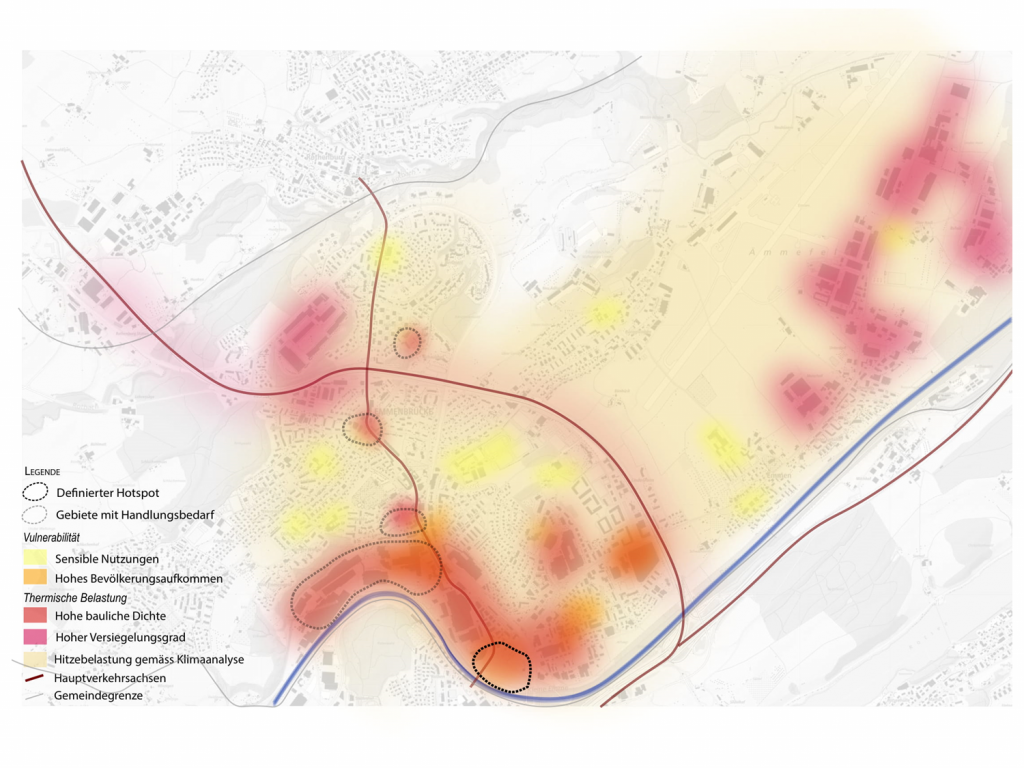Night
Landscape Nature Park Gantrisch
BEDA
Bern, Switzerland
Creating touristic services with nocturnal darkness

Thematic complex heat - a pilot project within the framework of the second pilot programme on adaptation to climate change
Visit project page (in German)
Clients
Municipalities of Horw, Kriens, Ebikon and Emmen in the Canton of Lucerne; the Office for Spatial Development Canton of Lucerne and the Federal Office for the Environment.
Beneficiaries
Municipalities
Key Partners
Municipalities of Horw, Kriens, Ebikon and Emmen in Canton Lucerne.
Periods of hot weather will probably occur more frequently in the future. Densely populated areas such as cities and agglomerations are particularly affected. The temperature is higher during the day and drops less at night than in rural regions due to a lack of air circulation, nighttime radiation, sealed surfaces and waste heat. Many adaptation measures (e.g., management of airflows, maintenance/adaptation of green spaces) also require long-term planning and spatial planning support and cooperation across municipalities, which is often still lacking. The preparation for this is insufficient in many regions.
In the framework of this project, we have developed a qualitative method that assesses the local heat stress of a municipality and simultaneously records the population’s vulnerability. We also developed a catalogue of impacts and corresponding measures for adaptation to/management of heat periods to determine the relevant standards in a participatory process with stakeholders from the city and agglomeration of Lucerne.
We were the project managers for this project, and also we provided the following services:
Co-create and design
Reach and connect
We developed a catalogue of measures that helps to select the measures that could be useful in the respective area where the action is needed. There are two ways to minimise the health burden in an area. Either one improves the climatic situation or reduces the vulnerability.
Do you want to learn more about climate resilience and heat adaptation? Then, get in touch with us!
Contact us